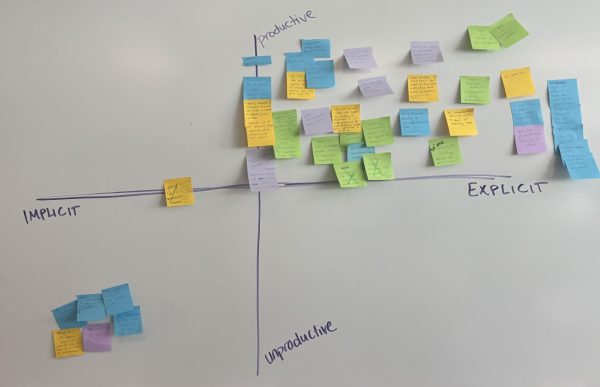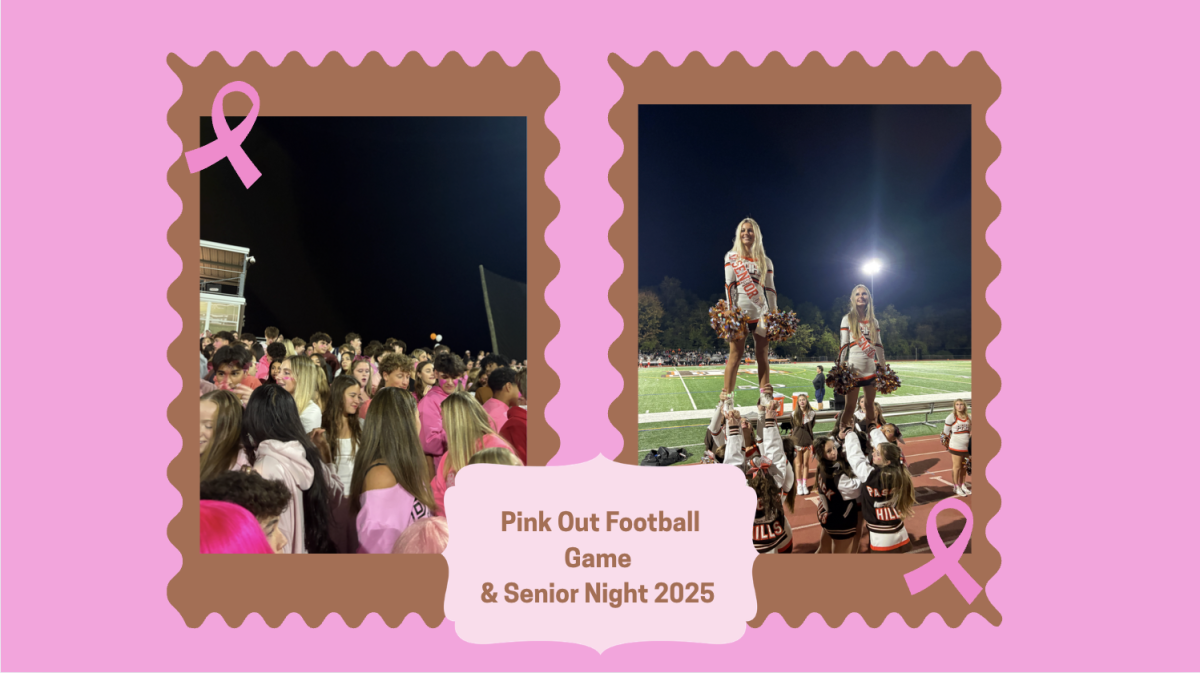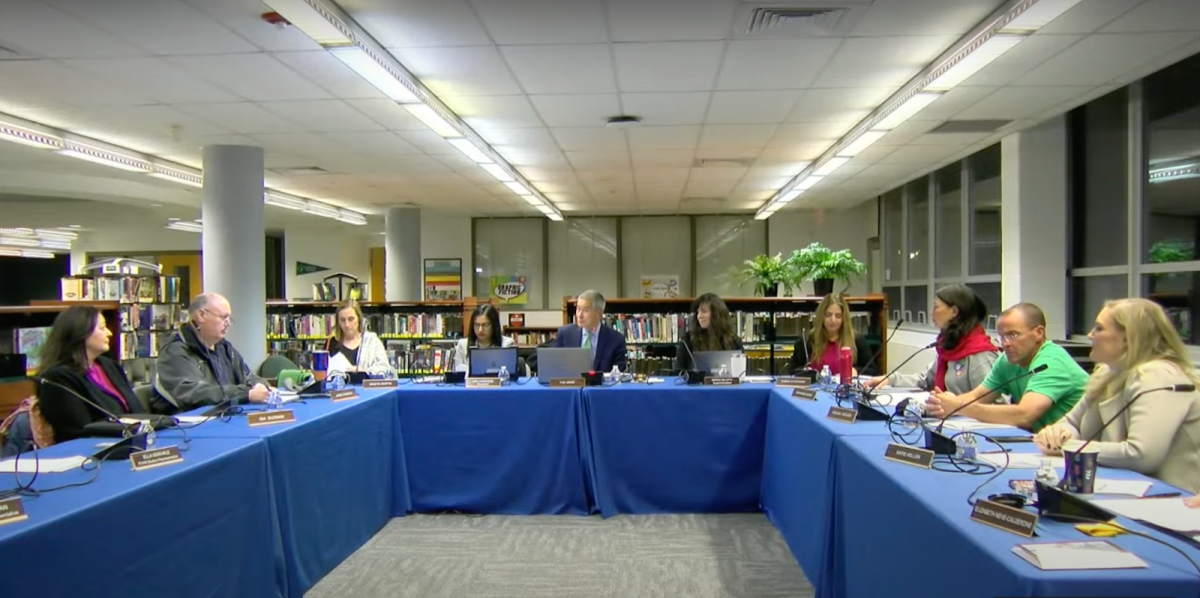On Saturday morning, at their annual retreat, the Pascack Valley Regional High School District Board of Education generated ideas, discussed norms, and addressed visions of the future and goals.
At the start of the meeting, BOE president, Gini Varghese expressed her vision of the board retreat as “a level up.” To maximize this effort, she introduced Facilitator Taylor Buonocore-Guthrie.
In response to BOE president Varghese’s statement that every board member can bring something unique to the discussions, facilitator Buonocore-Guthrie expressed leveraging individual experience and expertise.
“You will not see me as an expert…my role is to ask you the right questions,” she said.
The presentation included:
- The retreat purpose statement: “The purpose of the retreat is to enable the board to more deeply understand each other’s points of view, and crystalize board-driven goals and norms for the year ahead.”
- Visions for the district: “Create a culture of innovation, inquiry, and individuality that promotes achievement and choice by cultivating the skills needed to compete and collaborate as ethical and responsible global citizens.”
- The retreat agenda: Opening with creating connections, the current state of the Board and district, visions of the future and goals, board norms, appreciation, and takeaways.
The board broke the ice and built connections by introducing themselves, their jobs, their expertise, and any fun facts. Then, another board member or more would ask that person a follow-up question.
One of the discussions that came out of this activity shined a light on board member James Stankus, who has been on the board the longest, for 12 years. After he summarized himself in anecdotes, board member Stephanie Huang asked about his experience and what was most effective regarding the board.
“There was a time when the [board] environment was chaotic…People are people of reason…our unity is our sustainability…You have to remain united even if you disagree with people,” he responded.
Board member Kristin Martin added that the board is now much more trusted by district and town members and that it is much more transparent. Superintendent Sarah Bilotti agreed and added a reflection of the Pascack Valley Regional High School District Board in comparison to other boards.
“I do feel we have a cohesive supportive board. Everyone wants what’s best for our kids and not every board has that,” she said.
To follow up on these reflections and opinions, Facilitator Buonocore-Guthrie asked the board to rate the district from one to ten, name three factors that earn the district that number, and name three factors that keep the district from a ten.
Upon the presentation of the anonymous digital responses, every board member rated the district above median but no member stated the district was a ten. Many members stated that it is unrealistic to be a ten and that the district can always grow to be better.
“I would never give us a 10 because that means we are doing everything perfectly,” board member Debra Stephans said.
Since the board thought of the district highly but not perfectly, many different opinions came forth on the slides for factors that the district excels at and factors that create a gap for the district.
For example, some positive descriptors included the district’s funding, staff, and academics, while the factors that need improvement included diversity, accounting for the mental health and well-being of all students, and parent volunteer engagement.
One key speaking point was the issue of remaining stuck in the same way of doing things in which Stankus recommended regional Office of Curriculum and Instruction discussions with the four other districts to expedite progress and create equity.
The board members eventually dispersed for a “Walk and talk.” This consisted of pairs of board members stepping outside to brainstorm how to solve the problems brought up in the last activity such as groups being overlooked in the district and assumptions that should be addressed. Then, they all reconvened after some time to reach conclusions and expand on ideas.
The board discussed problems and solutions such as approaching different academic paths for students, music department initiatives such as potential honors classes, awareness of post-high school opportunities using workshops, for example, and more. This led to a concluding exercise rooted in visioning.
Each board member was tasked with creating hypothetical newsletter ‘headlines’ for what the district will have achieved between 2025 and 2028. Discussing their priorities highlighted what achieving a big goal looks like and what should be done this year.
One of the many goals that came from this discussion was social-emotional learning (SEL) in addition to challenging the status quo through change. SEL was proposed to develop interpersonal skills for teacher-student relationships. Regarding the ‘how’, it was recommended that the teachers be taught SEL at their beginning-of-year meeting.
“I think we need to bring students and teachers together,” Varghese said.

Quadrant analysis chart from the retreat.
To sum up the discussions of the day, the board participated in a norms exercise to address what is normal, what should be changed from the norm, and what should become the norm. This was done using the quadrant analysis method, rating how explicit, implicit, positive, or negative a norm is.


















































